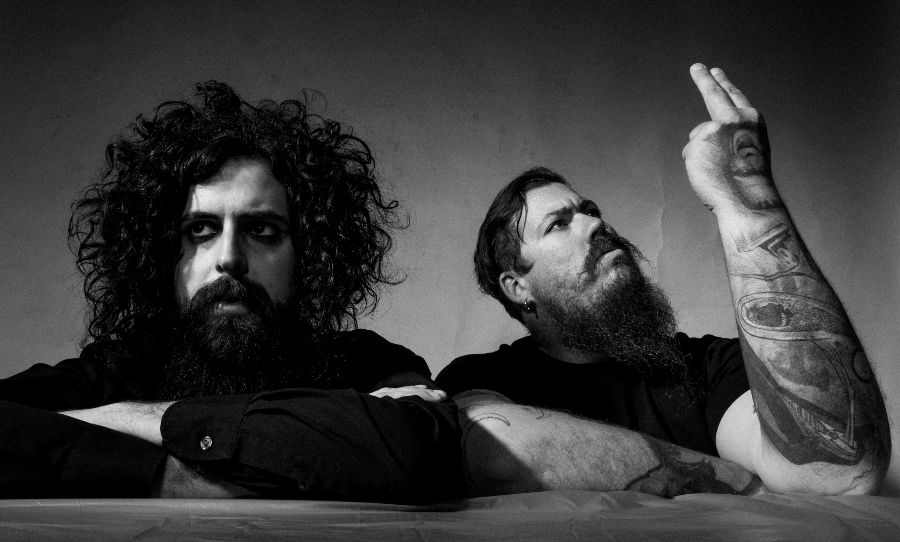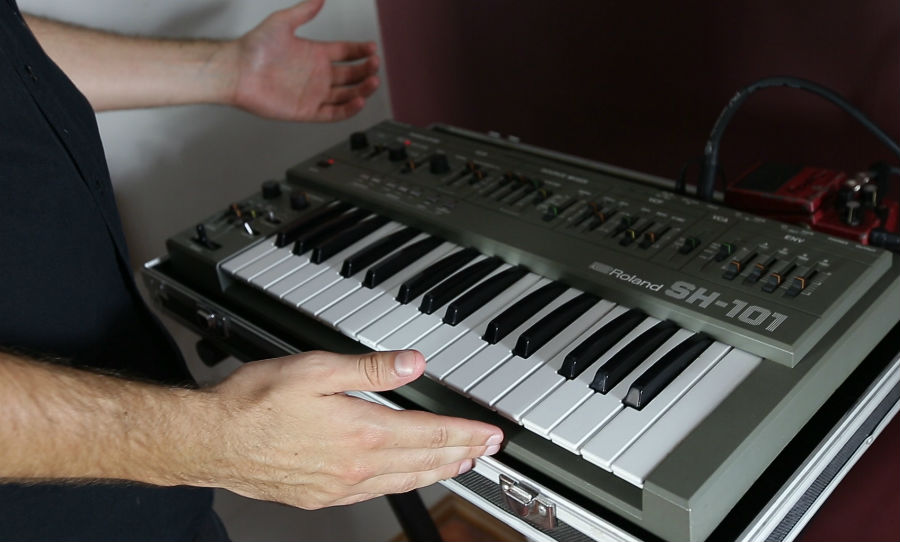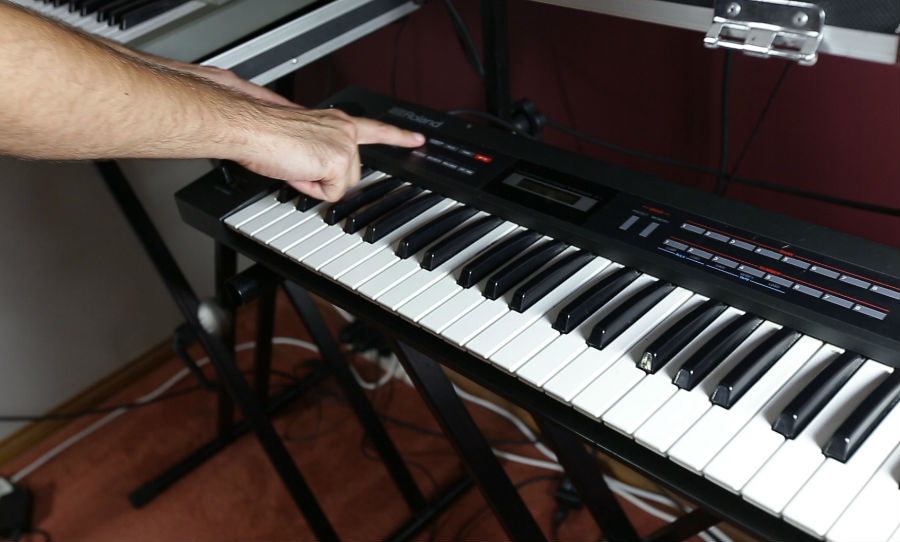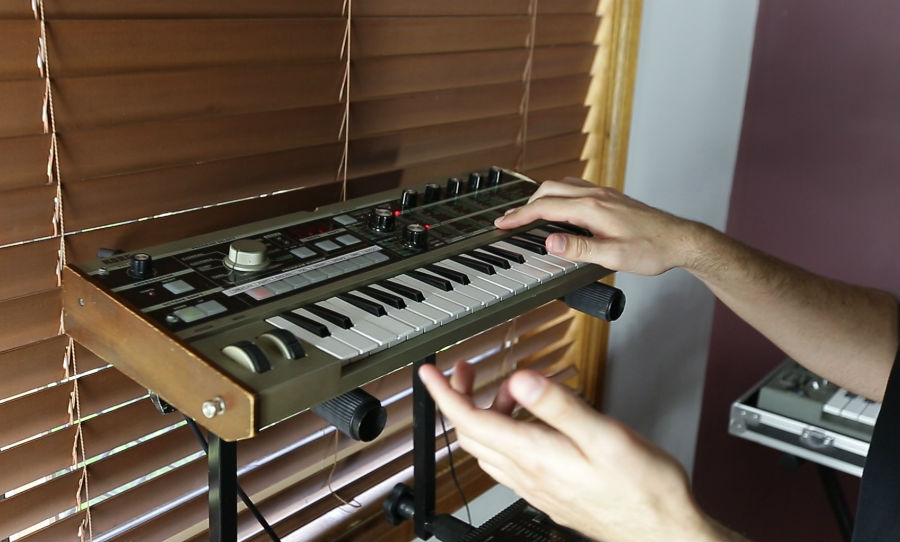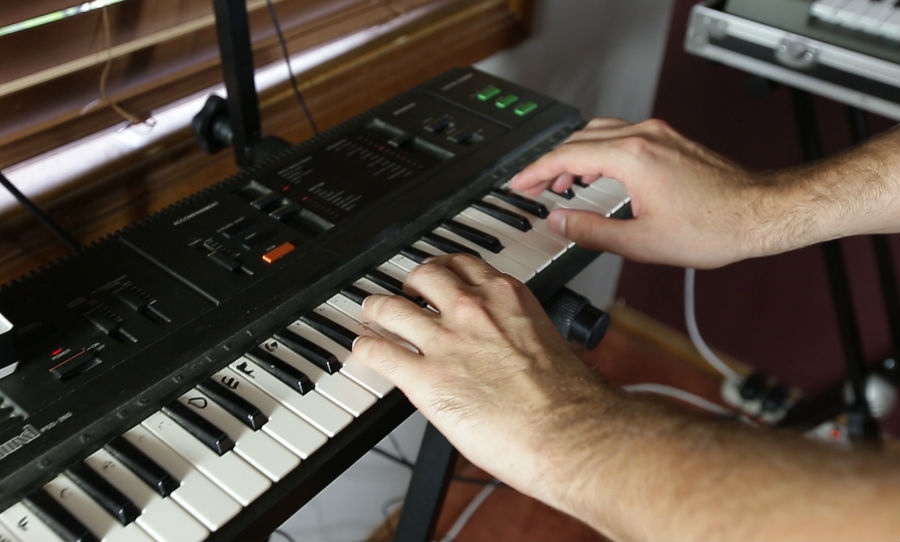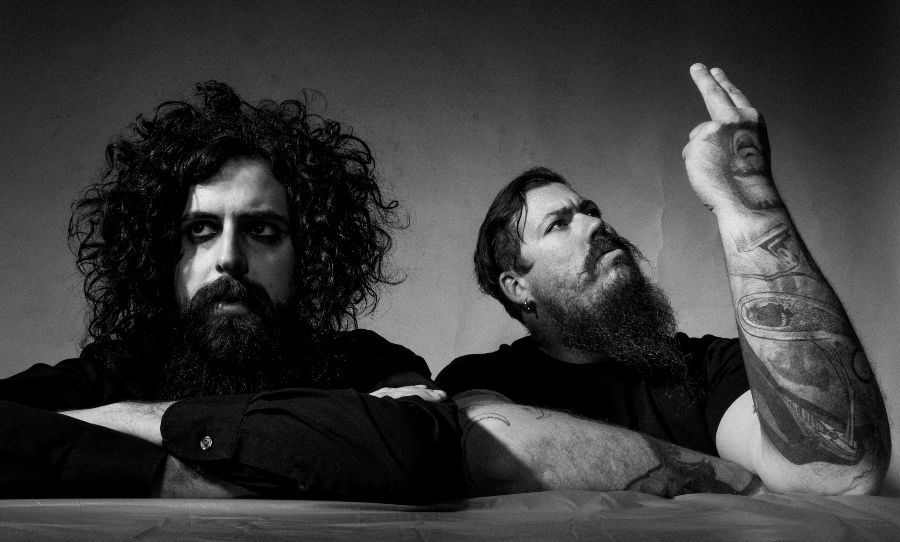It’s been a couple of weeks now since Gold Coast duo Tesla Cøils unveiled their latest single Dinosynth, and for that entire time, we haven’t stopped spinning it. With dark, pulsating rhythms, the song is the kind that sticks in your body for months.
So we caught up with frontman Jed A. Wølters for a complete run-down on the gear that went into making the new track.
We caught up with Tesla Cøils frontman Jed A. Wølters for a complete run-down on the gear that shaped his latest single Dinosynth.
Roland SH-101
I was lucky enough to purchase my first (and what would become my most favourite synthesizers ever) for a tiny $700 from eBay, around 7 years ago. Since then, the common price of these incredibly versatile monosynths crafted in the early 80s has skyrocketed. Once I discovered its sequencer, arpeggiator and control voltage (CV) capabilities, it became an instrument I used in almost every composition. I also use it live – even though it cannot store patches and you have to do everything on the fly, it keeps me on my toes and means that every show will be different due to its unpredictable nature. Thick and fat basses, squealing siren leads, sharp and slicing arpeggios and R2-D2-having-a-seizure glitch sounds. It does them all. I love this synth.
Roland Alpha Juno
I had further good fortune when this instrument was offered to me for free when a friend was cleaning out his garage. At first, I found it boring – it only had one knob to touch and I felt restricted by its factory patches. However, a few YouTube tutorials and forum-diving helped me decode its difficult user-interface, and I gradually became quick at programming my own sounds on it. It sounds just as lush and characterful as its predecessors (the much-sought-after 6, 60 and 106), and its DCOs (digitally controlled oscillators) offer much more tuning-stability and reliability than the ever-failing voice chips of the previous models. Gorgeous pads that take you straight to the back of a Luck-Dragon with a single 7th chord shape. If the SH-101 brings the industrial grit, this synth brings the fantasy spine-tingles.
Elektron Analog Four
If I hadn’t purchased this instrument, I would not have discovered the SH-101’s full potential. This is because they now share a symbiotic relationship in my studio, on account of the Analog Four bridging the gap between modern DAW and MIDI technology with early 80’s CV capabilities of the SH-101. Long story short, I could finally sync up the 101’s sequencer with my DAW, making it much easier to perform and record in time with the master clock.
That being said, the Analog Four is a most powerful machine in itself. Despite having a digital brain, it has a full analog signal flow, and it is quite capable of thick basses (built in distortion!) oddball pads, and eclectic drum machine kits. It shines mostly with its step sequencer, which is extremely user-friendly, tactile and expressive, as well as its little-buttoned keyboard, which I find cute and convenient. I can take this compact instrument to open-mic nights and weird people out to my heart’s content. Unique, useful, dynamic and reliable. Elektron always triumph.
Korg MicroKorg
I jumped on the MicroKorg train on account of wanting something to pop in a backpack and take on a plane. I realized that the keys were too tiny, especially if I was jumping around on stage and my paw ended up mashing the wrong keys. What made me hate the damn thing even more was its gross factory presets – they sounded way too dated and fluorescent raver-pants to me. However, I found a really cool Analog-style patch bank made by this guy on YouTube, which I bought for 6 Euro and transferred over to it. It became much more versatile and eccentric, and I now love the cheap and nasty thing. It is great for weirdo ancillary noises that poke in and out of a song, and its gross digital filter is disgustingly charming.
Yamaha Portasound PSS-260
When I was in high school, there was this huge storm that literally took the roof off of the music room. Most of the instruments got damaged, but my music teacher said that I could take this crappy Yamaha keyboard home and try and make it work. I cleaned it up a bit, put in 6 chubby C batteries and hey presto – it worked. Its patches are all extremely cheesy, yet they tend to be useful in compositions that need weirdo Lynchian juxtaposition or lo-fi charm. Feed them through distortion and tape delay and then you’ve got yourself a nightmare.
Stylophone
The Stylophone was marketed as a toy with which you could play melodies using a stylus. It is cute, fun and forces you to play a different way, which I love. Its sharp tone makes it perfect for lead lines, and its built-in speaker drives and breaks up in a delicious way. Portable too – great for pissing off people on a plane.
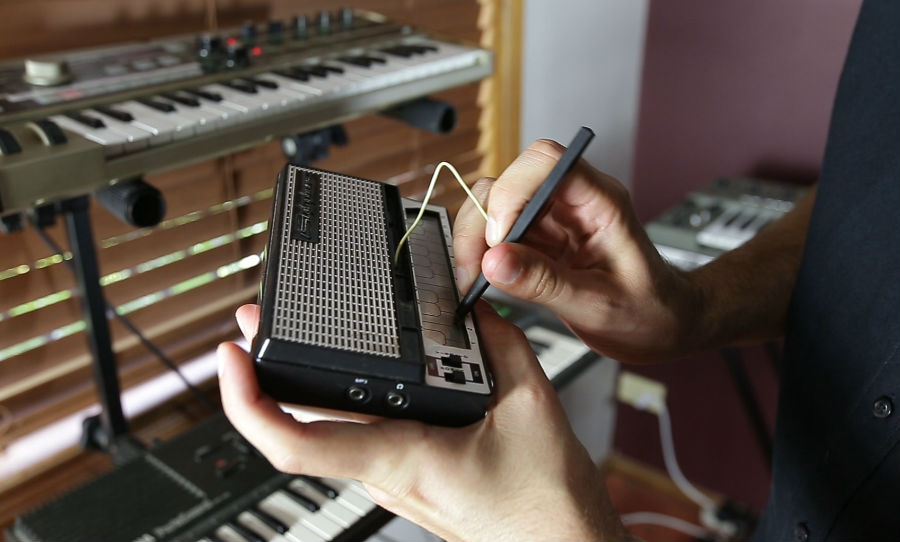
Dinosynth is available now. Watch the video here.
